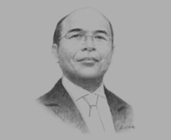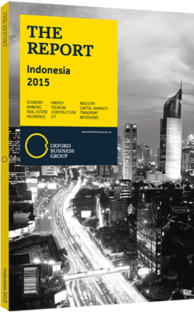Sudirman MR, Chairman, Association of Indonesian Automotive Industries (GAIKINDO): Interview

Interview: Sudirman MR
To what extent are more government incentives needed to boost sales in segments other than the low-cost green car (LCGC) segment?
SUDIRMAN MR: The LCGC initiative was introduced in 2013 under the umbrella of the Low Carbon Emission Programme, reducing taxes to 0% for cars that met lowemission and price points. It is a fact that this has helped increase sales for low-cost cars, but it is also true that other segments have been left behind. Hybrid, electric, and biofuel cars have not seen much positive impact from the regulation. Prices are higher for these segments, so more incentives are needed to boost sales.
Before applying additional incentives, the government wants to study the benefits that an increase in hybrid sales can bring to the industry, but no real progress has been made yet. We believe that hybrid and electric cars are the future of the industry worldwide, and Indonesia would do well in promoting sales of these automobiles in the domestic market. The local manufacturing base could also adapt to produce these cars in-house, ultimately increasing export numbers.
How can the industry balance an expected increase in sales with concerns over urban traffic?
SUDIRMAN: Today the general idea is that more sales of cars and motorcycles have a negative impact on urban traffic, particularly in Jakarta. However, this does not have to be the case. Both public and private players must work together to find a balance between increasing sales and reducing urban traffic, because the fact is that the automotive sector directly employs more than 1.3m people in the country. From GAIKINDO, we advocate for a prioritisation of urban transportation projects and for funding such projects through the taxes that the government collects from the automotive industry. In 2013, total taxes collected from the sale of vehicles in Indonesia amounted to almost Rp100trn ($8.3bn). Just to give an example, it cost less than Rp1trn ($82.7m) to build the 12km-long flyover from Tanah Abang to Kampung Melayu. We are therefore actively proposing to use 20% of total taxes collected to fund infrastructure projects in urban areas.
The idea is that we as an industry should become a financial supporter of public transportation developments. Another area that can be improved is traffic management. Better road conditions, traffic lighting and signs can have a significant impact on the matter, especially during rush hours. More investments in this field will be needed moving forward.
There are fewer suppliers of car components in Indonesia than elsewhere in the region. How is the trend evolving in the short to medium term?
SUDIRMAN: The more component suppliers we have, the easier it will be to increase quality, cost and delivery time. It is true that the volume of component suppliers in other countries like Thailand is higher. This is the result of a robust local and export markets; however, the potential for growth in Indonesia is greater. Indonesia’s automotive sector has grown on average 24.3% per year from 2006 to 2013, and the industry continues this trend. The ratio between Indonesia’s population and the number of cars sold is still low, and the industry can sell 4m to 5m vehicles annually. This will happen as more infrastructure developments come to fruition and GDP per capita continues growing. Component suppliers know this and keep coming.
How could fuel prices affect sales volumes?
SUDIRMAN: If we look at prior fuel price increases, like in 2005, we see that sales decreased about 40% in the subsequent months. Still, consumers inevitably adapted to the new prices and sales recovered. Today, we face a similar situation. Fears in the automotive industry are understandable and sales will be affected, especially in the next two or three months following the fuel subsidy cut, but sales will not decline over the long term. People will continue using cars and motorcycles in higher numbers, but fuel subsidies need to be revised and the automotive industry will be able to adapt to this.
You have reached the limit of premium articles you can view for free.
Choose from the options below to purchase print or digital editions of our Reports. You can also purchase a website subscription giving you unlimited access to all of our Reports online for 12 months.
If you have already purchased this Report or have a website subscription, please login to continue.

